Ueli Steck may have been Earth's best mountaineer, but one tragically bold attempt on Mount Everest brought his impressive life to an end.
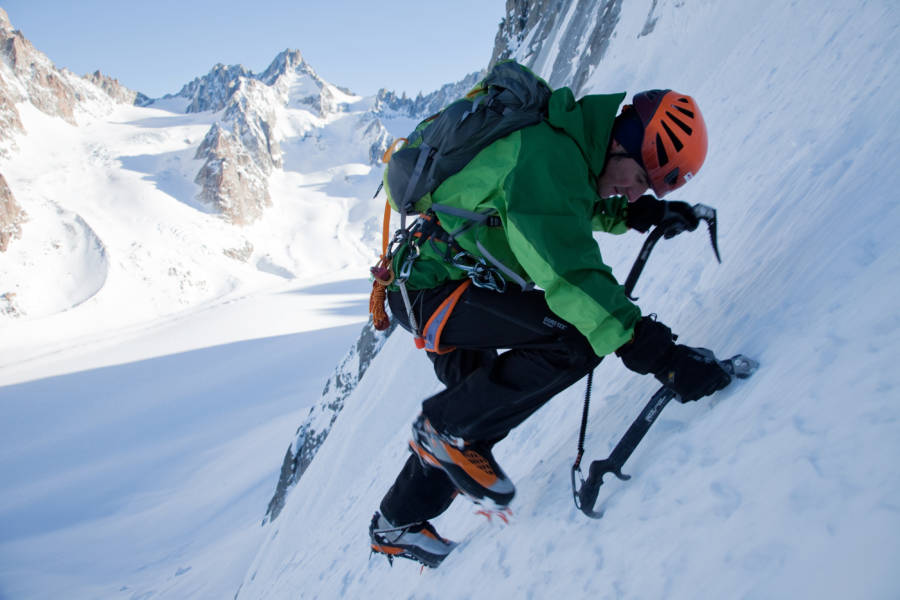
Jonathan Griffith / Barcroft Med / Getty ImagesUeli Steck scales Grandes Jorasses in the French Alps in 2011.
An incredibly strong climber who set both speed and endurance records that his peers had previously thought impossible, Ueli Steck of Switzerland was considered one of the greatest mountaineers of all time. Within just a few hours, he could propel his 5’8″ wiry frame along climbing routes that took others days to complete. The agility, endurance, and precision required for such feats earned him the nickname the “Swiss Machine.”
But though he set record after record, Ueli Steck became another mountaineering victim when on April 30, 2017, he died at age 40 after falling more than 3,000 feet in the shadow of Mount Everest.
Though he was attempting to brave the world’s tallest mountain at the time, Steck was alone. He was on the Nuptse peak and was about to make an ambitious climb along the nearby West Ridge of Everest, a notoriously dangerous route that had only been conquered once before — and he was going to do it solo.
Even after reaching Everest’s summit, Steck planned to journey straight through to the nearby summit of Lhotse, Earth’s fourth-highest peak. Men’s Journal later called the proposed feat “the ultimate test in human endurance at altitude.” And not only was Steck aiming to make this daring climb, alone no less, he was going to set the bar for himself even higher by doing it without high-altitude climbers’ customary supplemental oxygen.

Wikimedia CommonsUeli Steck
Alas, the bar Ueli Steck set for himself seems to have been too high and he became yet another casualty of Everest.
But although he’s gone, questions about his final fateful climb remain. Was he just too overconfident? Too much of a risk taker?
His climbs had frequently been risky. To complete his peerlessly fast ascents of other peaks in the past, he had chosen to both eschew gear that most mountaineers view as essential and perform the climbs solo.
And because he was alone that day on Everest, which he had climbed successfully in 2012, the exact circumstances behind his fatal fall will never be known definitively in full. However, a look back at his lifetime climbing record and an account from a Nepalese guide who saw him just before his fall can provide insight into both his impressive life and his tragic death.
Beyond The Limits
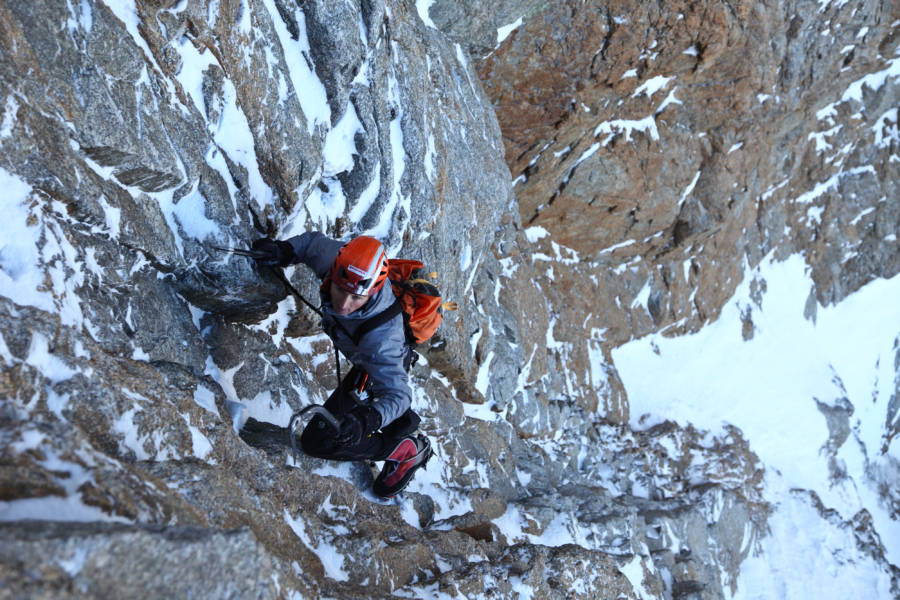
Jonathan Griffith / Barcroft Med / Getty ImagesUeli Steck climbs Droite Mountain in the French Alps in 2011.
Ueli Steck was born in 1976 in the small Swiss town of Langnau in Emmental. He grew up in a family heavily involved in winter sports. But it wasn’t until family friend Fritz Morgenthaler introduced him to climbing on the nearby limestone peak of Schrattenfluh that he became hooked. By 16, Steck was on even footing with most professional climbers. At 18, he made his first ascent up the North Face of the Eiger, a 5,900-foot peak in the Bernese Alps that is a favorite of professional climbers.
Steck made his mark on the climbing world in large part because of his extremely fast ascents of the Eiger’s North Face. He broke the Eiger speed record three different times starting in 2007. In his final Eiger ascent in 2015 (see below), he conquered the North Face in two hours 22 minutes and 50 seconds — a record that has yet to be beaten.
Whether on the Eiger or elsewhere, Ueli Steck pushed himself beyond the limits of most climbers by being the first one to conquer new routes or the first to make solo ascents up some of the world’s most treacherous mountains.
Unsurprisingly, he twice earned mountaineering’s most prestigious award, the Piolet d’Or (Golden Ice Axe), first in 2009 for his new route up Teng Kang Poche in Nepal and in 2014 for his groundbreaking solo ascent up Annapurna’s South Face, also in Nepal.
However, Steck’s ascent up Annapurna was controversial due to lack of independent proof. Some doubted his achievement because he claimed to have lost his camera and had failed to turn on his GPS watch, both of which could have verified his claim.

PixabayAnnapurna
Steck had actually tried and failed to summit Annapurna’s South Face, one of the Himalayas’ highest and most difficult climbs, twice before. In 2007, he nearly died when on a solo ascent he was struck by rockfall and fell nearly 1,000 feet onto a glacier below. Miraculously, he survived (how exactly remains unclear) and walked away with only a concussion. The following year, Steck was unable to save Spanish climber Inaki Ochoa after he suffered a stroke while the two were on Annapurna. He buried Ochoa in a crevasse the next day and turned back.
Despite his failed past attempts at Annapurna and lack of photographic or GPS evidence to back up his Piolet d’Or-winning claim that he’d climbed it solo, two sherpas did recall seeing a solitary headlamp high up on the hardest section of Annapurna’s South Face on the date in question. The jury of the Piolet d’Or was convinced it could only have been Steck and he received his second award, his feat heralded as a mountaineering landmark.
Ultimately, of course, it was a solo climb on an even higher and more dangerous Himalayan mountain that would prove to be Ueli Steck’s undoing.
The Death Of Ueli Steck
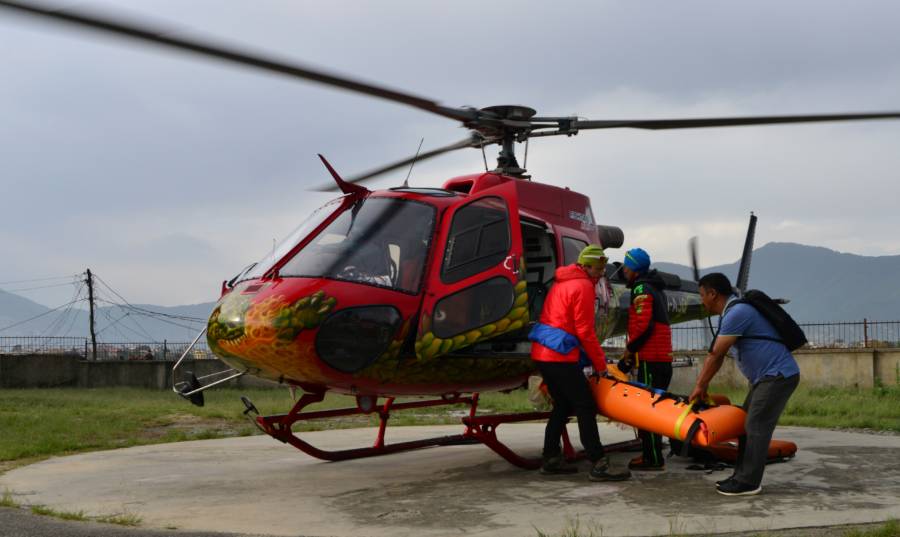
PRAKASH MATHEMA/AFP/Getty ImagesNepalese volunteers and friends of Ueli Steck carry his body at a hospital in Kathmandu on April 30, 2017, not long after his death earlier that day.
Despite being aware of the dangers and making a promise to his wife, Nicole, that he would limit his solo ascents, Ueli Steck continued to make most ascents alone even after Annapurna.
And climbing alone is certainly as dangerous as one would think. In the words of mountain guide Michael Wejchert, near the close of his New York Times piece on Steck’s death, “Those [solo climbers] who live into old age are usually the soloists who quit climbing alone.”
But soloing was an integral part of Steck’s famously fast ascents and thus an integral part of what made him, as Wejchert’s said, “probably the best mountain climber in the world.” And it wasn’t just that Steck made solo climbs, it’s that he did them with as little equipment as possible — a factor that may have contributed to his death.
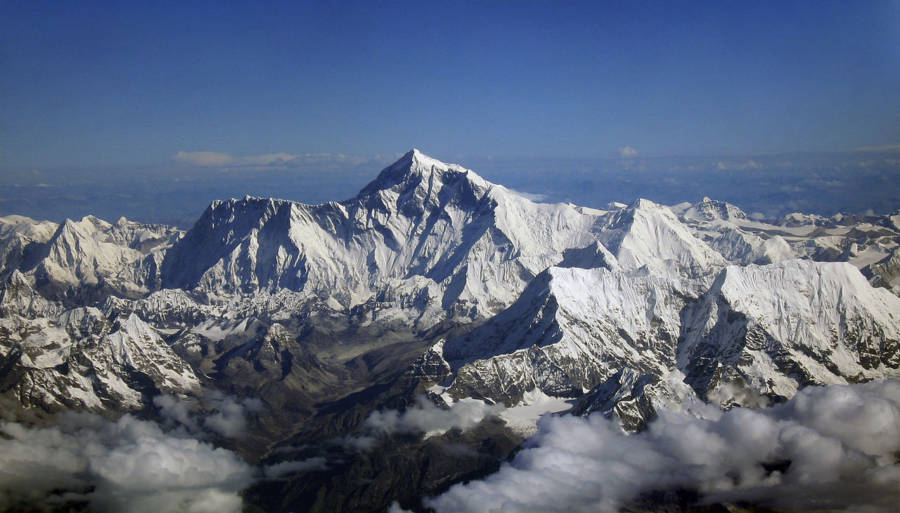
Wikimedia CommonsMount Everest
The exact circumstances of Steck’s death are partially still a mystery, but Nepalese mountain guide Vinayak Jaya Malla, one of the two men who found Steck’s body, was able to provide some unique insight into both Steck’s fall and the aftermath.
On the morning of April 30, 2017, Malla saw a climber on a ridge at least 23,000 feet high on the Nuptse peak just west of Everest’s summit. But shortly after that sighting, Malla heard a noise and noticed that the climber was gone.
That climber, of course, turned out to be Ueli Steck. Malla and another guide found his body at 9:34 a.m. about 3,000 feet below where they saw the climber earlier. Nearby there was a rock covered in blood from a possible rockfall.
When they found the body, Malla found that Steck was wearing no harness and had with him no helmet, gloves, or trekking poles. While this equipment could have been lost in the fall, it’s possible that the daring Steck simply didn’t bring them with him that day in the first place.
Steck was indeed well-known for traversing routes with little more than trekking poles and no ice axes. But he was also known for being meticulously prepared: keeping diaries, as well as noting weather, health, and a list of radio frequencies. He also put himself through rigorous training with an Olympic coach and practiced constantly.
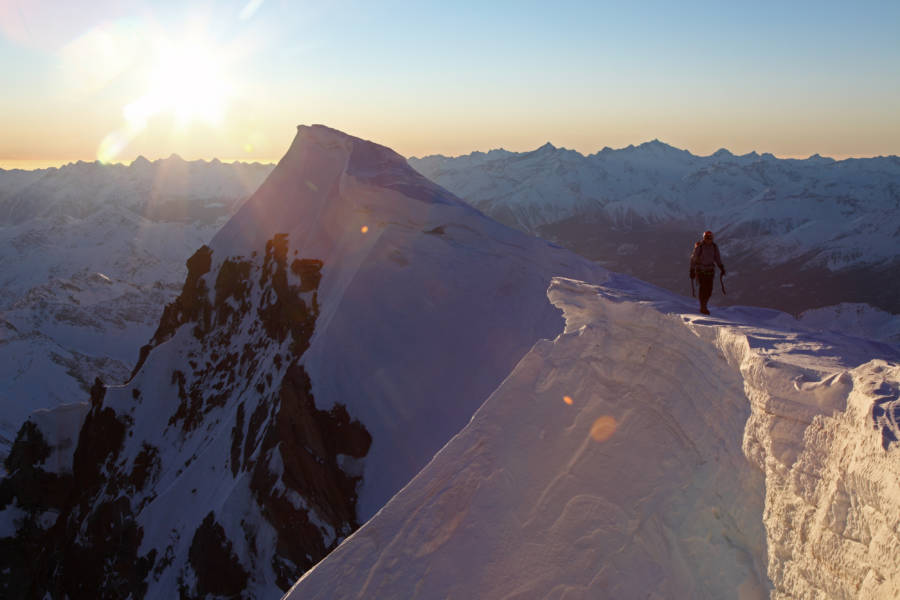
Jonathan Griffith / Barcroft Med / Getty ImagesUeli Steck walks along the Gilat route of Droite Mountain in the French Alps in 2011.
But in high-altitude mountaineering, there’s no such thing as a 100 percent guarantee of safety. One little mistake or unexpected event, such as a rockfall, can cause death.
Ueli Steck knew this and put himself to the test time and again regardless, like so many great mountaineers do. And Steck may, as many have claimed, have been the greatest of them all.
Perhaps it was Malla who said it best: “If you have been to the Himalayas, you will often see Bharal, blue sheep, very high in the mountains. They are very agile and fast… But sometimes, blue sheep fall off from cliffs… Perhaps we must think of Ueli as such – as a Bharal, as one of our blue sheep of the Himalayas who one day fell for an unexpected reason but was otherwise a master.”
After this look at Ueli Steck, discover the stories of other well-known Mount Everest casualties including Rob Hall, Hannelore Schmatz, and George Mallory.





